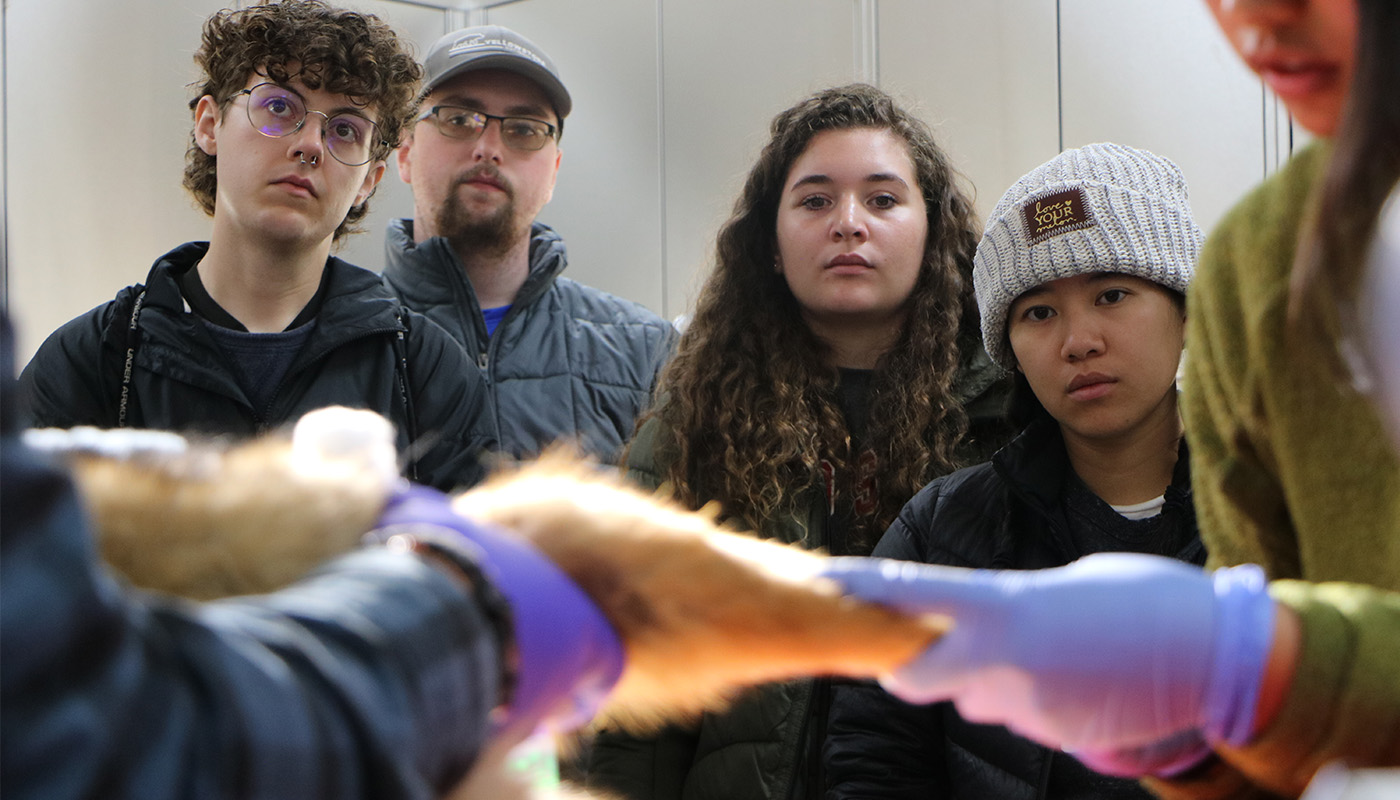Under the moonlit canopy in the Forest Preserves of Cook County, a group of students huddled quietly as they watched wildlife biologists prepare netting to safely capture deer for research. Moments later, a sudden burst of motion signaled the start of an unforgettable experience. For these 34 Ohio State University students, this wasn’t just a three-day class trip in November; it was an entry into the fascinating, and often misunderstood, world of wildlife management.
For more than 14 years, the Forest Preserves of Cook County has partnered with universities to offer sessions of hands-on fieldwork that few classrooms can replicate. Led by experts like Chris Anchor, the Forest Preserves’ senior wildlife biologist, the program provides an immersive experience in how invasive research—work that involves capturing and handling animals—helps answer critical questions about wildlife health and behavior.
Students at schools like OSU, Purdue University, University of Illinois Urbana-Champaign and University of Wisconsin-Madison/Stevens Point learn to safely handle animals, collect vital data and gain insight into the complex dynamics between humans and wildlife in an urban environment.
“It began with me teaching an advanced mammalian biology class over at Ohio State,” said OSU professor Stan Gehrt, who has collaborated with the Forest Preserves since the 1990s. “I’d already been working on a research project with the Forest Preserves and Chris Anchor for a long time. We decided to try to incorporate that research project in a field trip for that class.”
Out in the preserve, after the deer were netted, the OSU students watched in fascination as wildlife staff drew blood and attached radio collars that track their movement. After 15 minutes, the animals were set free and scampered away.
“[The team is] quick in and out,” says Annalisa Arostegui, an OSU student passionate about endangered species conservation. “They know what they need to do, which I really appreciate. I have learned a lot about animal welfare, so minimizing the time that these animals are under stress is super important to me. I appreciate that they also value that they’re trying to keep the stress to a minimum.”
The day after the deer encounter, the students followed the wildlife team as they captured coyotes and brought them back to the lab. In coordination with staff from the Max McGraw Wildlife Foundation, the coyotes were sedated for blood samples and be tagged and collared. Some eager students even got the opportunity to take measurements of the animal. Later at the lab, students watched as a necropsy was performed on a beaver and a deer.
The program also teaches conservation and ethical responsibility. Students learn to minimize stress on animals, working efficiently and respectfully to gather data before releasing them back into the wild.
“Taking this class and going on this trip was a way for me to find out if this is a potential career path for me,” Arostegui says. “I’m still kind of undecided. Going behind the scenes of what a grad student’s day-to-day life would be is very insightful.”
The program isn’t just about hands-on techniques; it’s about understanding the importance of these efforts. “There are many things that cannot be addressed being hands off, like zoonotic disease surveillance,” Anchor says. “At some point, somebody has to have a blood sample or a tissue sample to understand how a disease moves across the landscape. You have to hang a radio collar to understand home ranges and dispersal patterns. Otherwise, you’re just guessing.”
Research into zoonotic diseases—diseases that start in animals and transmit into humans such as West Nile virus, avian influenza, rabies and COVID—have far-reaching implications. By studying species like coyotes and deer, researchers can develop strategies to mitigate human-wildlife conflicts and maintain ecological balance.
Anchor points out that transparency is key. He says doing this research and getting this vital information means they can put themselves one step ahead.
“Because then we can be proactive, as opposed to reactive,” says Anchor. “We know that when disease like Tuberculosis hits the Chicagoland area, we can already have an understanding of home ranges, dispersal rates and interactions with other animals.”
Following trips to the Forest Preserves, OSU students give their feedback through a survey. Gehrt recalls a student who, after just a few hours in the Forest Preserves, declared the experience the highlight of their four years at OSU.
“Across the board for 14 years, consistently, every single year, most of the students say that this field trip is like the most influential, most exciting thing that they’ve experienced during their four years at Ohio State,” says Gehrt. “Often the students will say that the experience from this class, this field trip, helps them decide that this is a direction that they want to go.”

